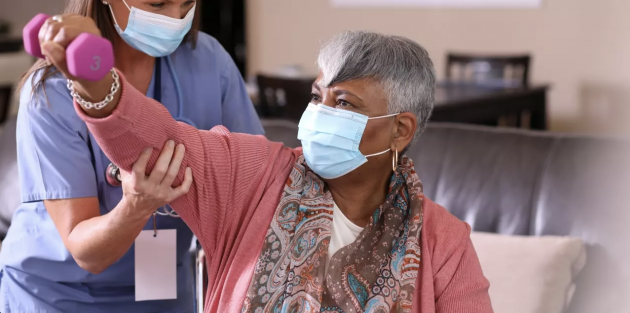
By Seth Ravine
As managed Medicaid and Medicare Advantage (MA) continue to grow—more participants and health plan expansion—the need to effectively address health related social needs (HRSNs) increases proportionately. Unfortunately, the healthcare system is overwhelmed by the influx of individuals faced with significant health-related challenges.
The pandemic demonstrated the need for in-home services and accelerated their adoption post-pandemic. MA health plans are carrying the momentum forward by offering new or expanding current supplemental benefits at a time when competition for membership continues to grow.
Progress is being made, but more slowly than we would like. There’s now recognition that a variety of external causes impact HRSNs. In fact, 80%-90% of health outcomes aren’t related at all to clinical care, but are instead influenced by socioeconomic and geographical factors.
Healthcare must look holistically at the links between HRSNs and clinical outcomes. It’s critical to identify and prevent the progress of acute events that might lead to increased depression or stress, which, in turn, can keep individuals from going to important healthcare appointments and, ultimately, taking a trip to the emergency department.
The Care Conundrum
Physicians and other healthcare providers want to help vulnerable populations, but often don’t have the time, team or resources necessary to do so.
When The Physicians Foundation surveyed more than 1,500 physicians in a variety of practice types the organization found:
These numbers are important because nearly every physician surveyed said that the vast majority of their patients were affected by SDoH to an extent:
Another way to attack HRSNs
Start in the home. There are many opportunities to make an impact on an individual’s health and wellness by working with them directly in their homes. Additional care services can supplement the work done by physicians and other caregivers to influence positive outcomes for health plans, providers and health plan members. Consistent engagement can educate members while the health plan collects data to assist with preventive healthcare measures, navigating the health system and identifying lower cost, more convenient healthcare services. This is just the beginning when employing data.
The challenge today is the fragmented approach to in-home services. For high-risk individuals, this adds complexity when navigating their healthcare journey. For risk-bearing entities, efficient, organized data collection that is actionable is needed to build a coordinated whole-member approach to care.
“…(H)ealth is mostly about living. Strong health helps us lead meaningful, productive, and satisfying lives,” reports the McKinsey Health Institute. “Health is the extent to which we have physical and mental energy, whether we can fully use our senses, and the extent to which we can comfortably engage in meaningful activities.”
At Modivcare, we’ve performed studies to better understand how our services embody this ideal of “health as living.” We focus on providing and managing inclusive, holistic services in a coordinated way that positively impacts the members we serve. Our initial efforts are driving encouraging results:
The objective of care, whether delivered directly or indirectly, is to support an individual’s wellness to support living a better, healthier life. Today’s splintered approach to providing in-home services makes it difficult to see the member holistically and difficult to deliver the services they need. This can contribute to health inequities in underserved populations.
To better enable across-the-board improvements for this population, undertaking data collection and analysis can result in a better distribution of resources. Utilizing a data-driven, holistic member view, predicated on data intake and corresponding action, can bring about the important goal of living well in good health by reducing HRSNs.
Seth Ravine is Senior Vice President of Strategic Solutions at Modivcare.
SHARE
Subscribe to receive our latest blog articles delivered straight to your inbox.
RESOURCES